Photo



I just met this Pacific Gopher Snake Pituophis catenifer catenifer in my basement (top two photos) I can’t imagine it being a nice place for a snake to hang out because its chilly down there, but we’ve found mice there in the past, so maybe it was on the hunt. (They eat small mammals (pocket gophers, mice, voles), birds & bird eggs and lizards & insects when young or in need.)
When I picked it up for relocation purposes, it puffed up its body, flattened its head and shook it’s tail (mimicking a rattlesnake), which turns out to be the standard defense reaction for a gopher snake. They can be anywhere from 2.5-7 ft (76-213 cm) long (my basement friend was roughly 3.5 ft) and can live up to 15 years in the wild.
The Pacific gopher snakes are found in the coastal areas throughout western North America. The bottom photo was on my front steps in August 2014 (within 20 ft of the basement), that snake was about a quarter of the size of today’s snake. I couldn’t find any reference to young changing color, so I am going to guess that these are not the same snake given the color differences.
4 notes
·
View notes
Photo
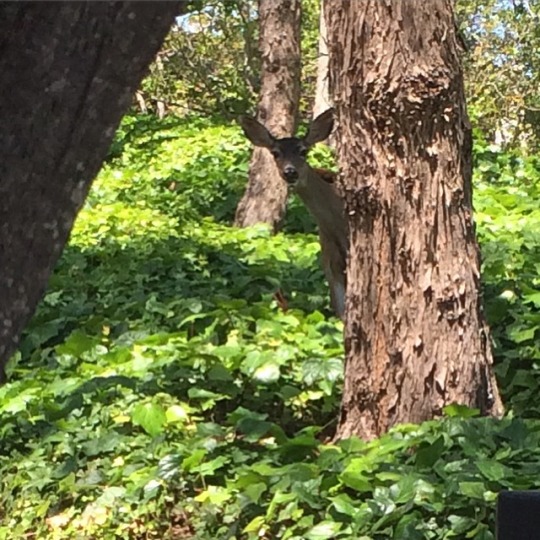
Well, hello there!
A Blacktail Deer met me on my way into the office yesterday, Odocoileus hemionus columbianus
The photo is very grainy, as I was about 40′ away with my phone (and then proceeded to play with filters... and then deleted the original photo... yeah...) Anyway, it was a nice moment of distraction from having to go into work on the Sunday of Memorial Day weekend.
Hope everyone is having a lovely weekend
3 notes
·
View notes
Photo

Bumble Bee Beth (yes, another great Land Path’s IOOBY nature name) is participating in Santa Rosa’s Free Art Friday. This is her newest installment, Diogenes’ Lantern. Last night she hid it somewhere in Santa Rosa and then instagramed a clue to help admirers in their search. I’m not sure if it’s been found yet, so if you are in the area and want to give it a shot, check her Instagram page @bethy_beth_sabo for the clue.
Happy Hunting!
#FreeArtFridaySR is the Instagram account for Sonoma County's art scavenger hunt. Tag teasers, clues or finds w/ #FreeArtFridaySR and @FreeArtFridaySR to be seen!
1 note
·
View note
Photo
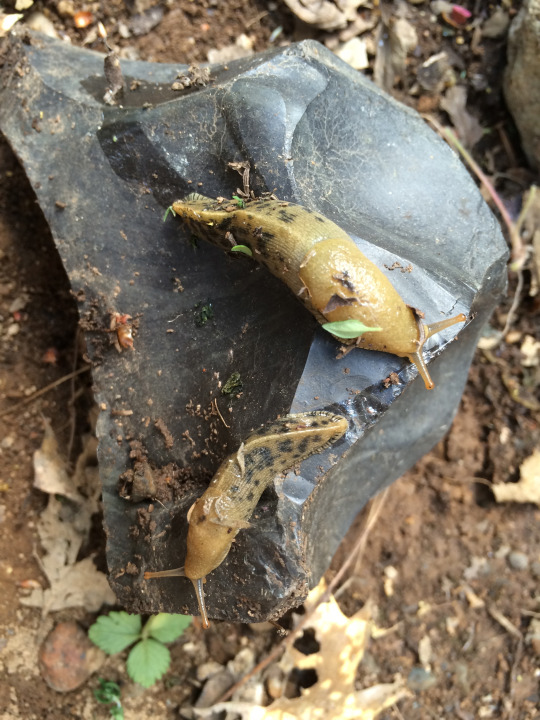
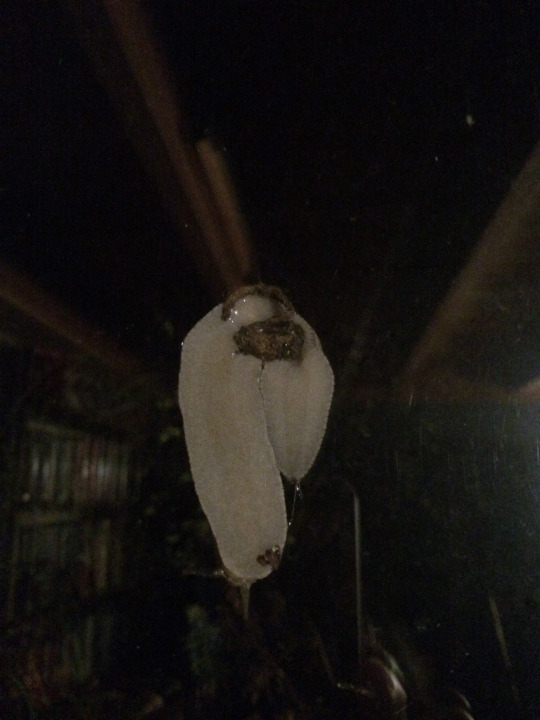
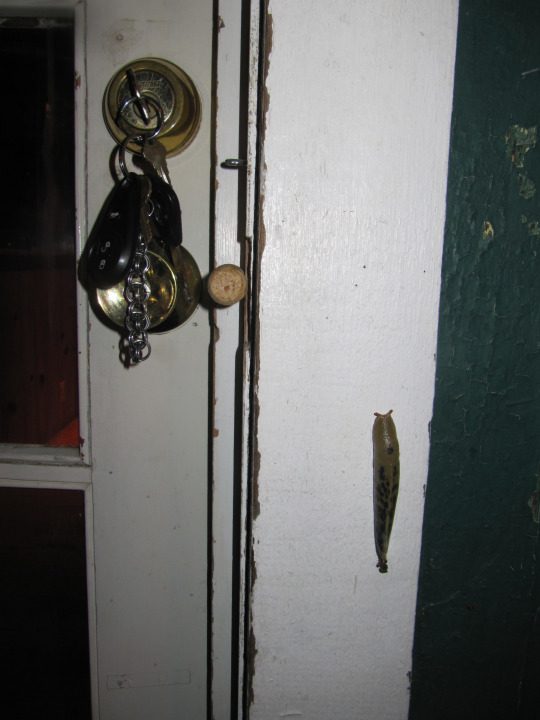
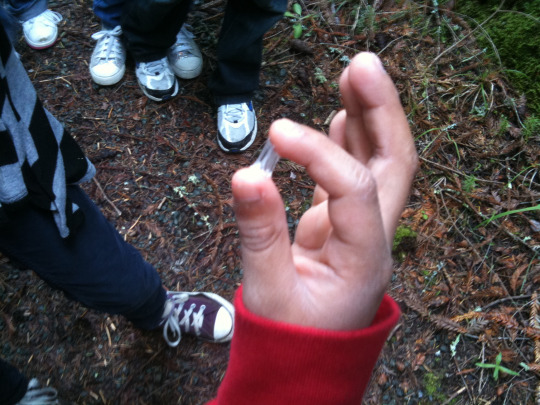

More Banana Slug Love
Ariolimax columbianus
Top Left photo - 2 banana slugs on a chunk of obsidian
Top Right photo - a banana slug from underneath. Yes, I do believe it’s pooping on my window.
Middle photo - Look who came to greet me as I came home late one night
Bottom Left photo - banana slug slime! we’re talking serious adhesive properties
Bottom Right photo - just cruising (looking for cat food)
1 note
·
View note
Photo
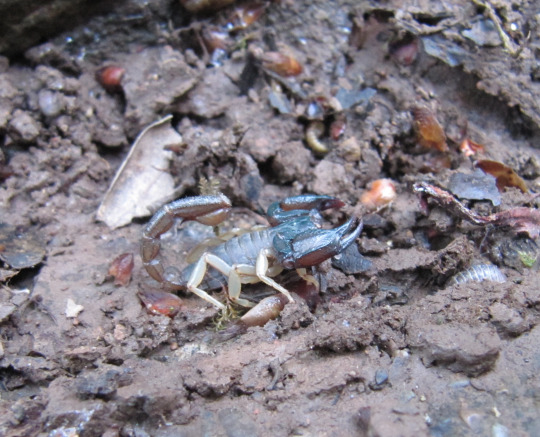

These two scorpions, both found in Healdsburg, CA are evidently the same species Uroctonus mordax, the California Forest Scorpion.
I found the Brown One in my upstairs bathroom shower... have no idea how it got there, trying hard not to think about it actually. The Blue One was found in the yard under a rotting log (I have a very fashionable yard, it’s in the oh-so-trendy-chic ‘forest hillside’ style =)
side note- I found references to the same species being called the Pacific Northwest Forest Scorpion, the Northwest Forest Scorpion, the Western Forest Scorpion, as well as the California Forest Scorpion. hmmmm... so many names, so many shades of exoskeleton... I wonder if I am missing something? I’ll settle with calling them Forest Scorpions.
The Forest Scorpions are pretty shy Arachnids and it takes a lot to get them riled up enough to sting (which is like a bee sting, I’m told). They would rather play dead. When I went to relocate the Brown One to a more suitable habitat, it did not put up a fight (which I was grateful for).
The females can have a brood of up to 26 babies, carrying them on her back for the first week and a half after birth (during late summer, early fall). At roughly 10 days of age, the brood goes through their first molt and at the point, head out on their own (They grow up so fast, sniff, sniff).
A few more random facts
A Forest Scorpion may live up to six years (which equates to roughly 5 molts)
They eat mostly insects.
They like a certain level of humidity in their habitat (i.e under logs and rocks, basements, etc) and will burrow into the ground during dry times.
They are really very beautiful, though I would prefer they stay outside of my house.
5 notes
·
View notes
Photo

I have a creative neighbor up river (Healdsburg, Ca on the Russian River)
1 note
·
View note
Photo


Gastropods in the Morning! the Pacific Banana Slug, Ariolimax columbianus. isn’t it just lovely? :)
Banana slugs eat leaf litter, green plants, fungus and such. Along its favorites is, get this- poison oak! (as if it wasn’t already, the banana slug has just become my hero)!
They have two pairs of tentacles. The upper pair (eyestalks) are used to detect light & movement. The lower pair are used for smell. If bitten off, the tentacles can be re-grown, sweet!
Covered in slime to protect from dehydration and gross out predators, the banana slug has one lung, which opens externally on it’s right side for gas exchange (called a pneumostome, the big hole in the top picture).
They are hermaphrodites. Very handy.
The official mascot of UC Santa Cruz (not this species, but still totally cool).
And there are several songs out there, singing about the banana slugs lovely attributes. Exhibit A for your viewing pleasure, https://www.youtube.com/watch?v=rhlZo7zlShk
6 notes
·
View notes
Note
What tips do you have for mushroom hunting in forests? Also, have you ever seen a mushroom that looks like a pretzel bun? I found one a while ago, but when I try to identify it by googling "mushroom that looks like pretzel bun" all I get is recipes for pretzel buns and mushrooms (apparently a delicious combo). It's kinda frustrating!
Hi Merismo, Lol-I’m not sure I’m the right person to answer that, I’ve only been really looking since last November-ish. And that said, Ihaven’t run into a pretzel bun mushroom, but it sounds awesome (and yah,kind of yummy). I feel yourpain on the Google search. I was looking for a mushroom shaped like a ruffleyribbon and my search kept bringing up brown ruffley dresses. Not quite what I was after. I’ll keepon eye out (for the pretzel mushroom, not the ruffley dress).
Sohunting tips… well, in the immortal words of Morticia Addams ‘it has to be damp’. Wet seasons definitely play a role, aswell as terrain. I live on the northeast side of an oak covered mountain,so we don’t get a whole lot of direct sun between Nov to Feb (i.e. it’schilly). Going off trail helps, the wet leaf litter and downed wood make great fungushabitat. I think after awhile,you just get keyed into looking for them. A mycologist told me that it’s fine to pick them. If the fungus is fruiting, it alreadyhas all the mycelium to make more, so you aren’t damaging the fungus as awhole by picking them. That helped me a lot with identifying them, as it gave me the chance to get a good look. I also became better atidentifying them once I understood the basic shapes and growth patterns. I guess that’s about it; damp, no directsunlight, dead wood & leaves, off trail, know your basic shapes. Ha! Sounds pretty dark, but it has been super fun. The wild flowers are out now, but sofar they just aren’t as exciting as fungus. Oh dear, I can hear an argument between a botanists anda mycologists just there =) If you go out looking, good luck! Find something awesome.
2 notes
·
View notes
Photo


Another mushroom post and just look at it, it's gorgeous. It almost doesn't look real, it's so beautiful. My guess, it's a type of Bolete (Boletus sp) given the pores (instead of gills), thick stem and convex shaped cap. It was found in Santa Rosa, Ca, in an oak woodland forest. It stood a good 6 inches tall (~15cm) and the cap was about 4 inches wide (~10cm). Another conundrum, so cool!
Can anyone identify it? =]
4 notes
·
View notes
Photo


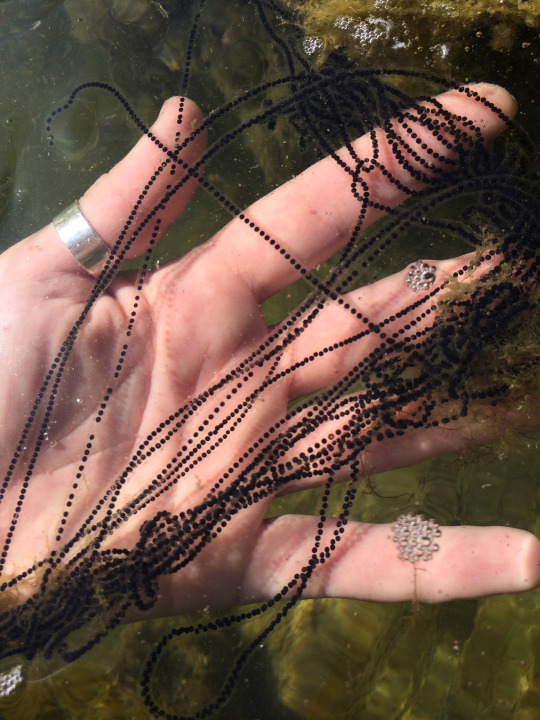
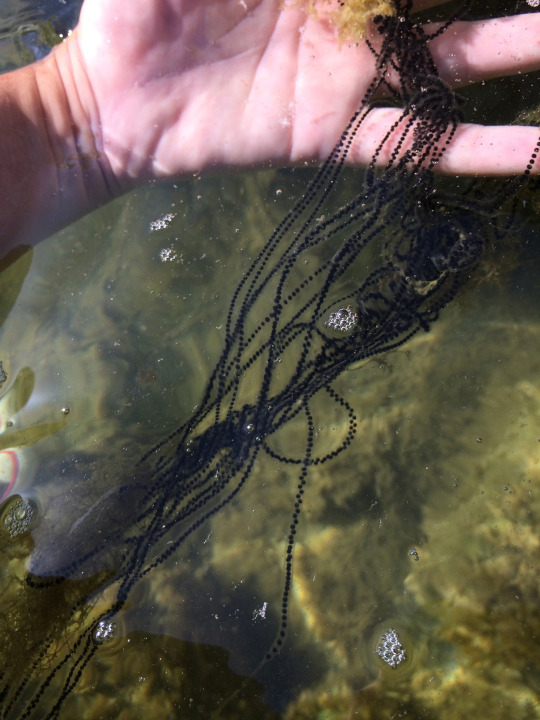
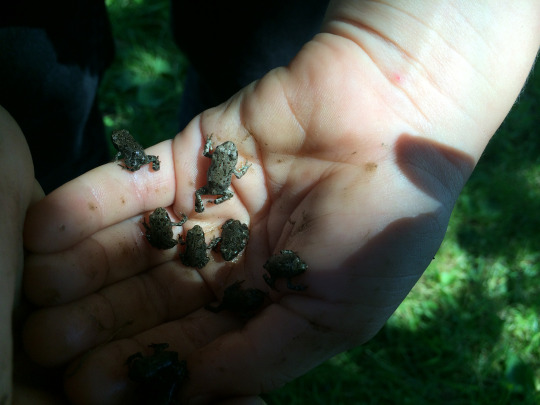
Look who I ran into on the way to the basement, Miss Toad! (top photo) Her business card reads Anaxyrus boreas, but it's just "Western Toad" to those that know her. A couple of clues give away that she is pretty young. She's only about 1.5 inches long (~4cm) and adults can get to be about 5 inches (~13cm). Also, her white dorsal stripe is barely noticeable. If she were an adult, her stripe would be easy to see.
Western toads are aptly named, as they are native to western North America. I read that in California, their habitat includes wet or dry mountain meadows or riparian deciduous forest, with available open water for breeding. I've lived in a handful of different Northern California biota; annual grasslands, mountain conifer forests (mainly Ponderosa pine) and coastal oak woodlands (Black & Live Oak, Madrone and Douglas Fir) and the Western Toad has always had a strong presence.
Some facts our young Miss Toad might put in her profile;
She has lovely blotchy olive to brown colored skin, a spotted belly and horizontal pupils. (oh, those eyes!)
Life style; aquatic eggs (in super cool stringy masses- middle photos from Spring of 2014), to tadpoles, to toadlets (the bottom photo) and then terrestrial adult toads (top photo of Miss Toad herself).
A nice dinner out might include; beetles, ants, rolly pollies, spiders (insects and arachnids they can hunt on the ground).
Western Toads are prey for birds, snakes, other amphibians and mammals. Ok... odds are good this fact would not be advertised in a Profile, but I digress.
The large bumps, off-set and behind her eyes are called parotoid glands. These are external skin glands which secrete a neurotoxin call bufotoxin. This is her main self defense mechanism against predators.
I've been told that racoons will peal the skin off toads before eating them. Pretty tricky and well... gross, but if you're going to eat a live toad, you do what you have to do.
She likes long slow walks, rather than hopping, but she can jump pretty far when needed.
She likes the night life, she's nocturnal.
She's a natural girl, no chemicals for her. Because she is an amphibian, she can be easily injured by the absorption of chemicals through her skin, especially fertilizers.
2 notes
·
View notes
Photo








Fungus Discovery... Until next Autumn (Part III of III)
All specimens were found in Healdsburg, CA, except the bottom right, which is a photo of Marie Heerken's Mushroom art.
(top left & right photos) Hygrocybe squamulosa (?) the cap was about the diameter of a nickel and had sturdy flesh. I broke the stalk (which was hollow) by accident, as it was well rooted into the ground. Discovered February 2015.
(second row from the top)- I have no idea what kind, but look at the spores! Found in the same Madrone forest as the possible Clitocybe sp photos below it. Discovered January 2015.
(third row down, left and right photos)- a type of Clitocybe sp (?) Photo on the left was old & dehydrated. There were hundreds of these big mushrooms scattered under foot in a Madrone forest. I wish I'd taken a landscape picture to show the population size. They were amazing. Discovered January 2015.
(second from the bottom photo) - Earthstar (Geastrum sp). Roughly 10 cm in diameter. I think this is one of the coolest mushrooms I've found yet! (well... that's hard to claim, they are all pretty cool). Identified November 2014.
(bottom left photo) - a small shelf fungus Ganoderma applanatum, also called the Artist's Conk. When I was young someone told me that fairies and trolls wrote secret messages to each other on these- I believed that till an age I'd rather not admit to. (And I still check for messages =) Identified February 2015.
(bottom right photo) - a Ganoderma applanatum used by Marie Heerken as a canvas. Take a look at some of her other work http://americanmushrooms.com/heerkens/
Disclaimer- I may have been wrong, this might not be the last fungus post of the season... =)
3 notes
·
View notes
Photo


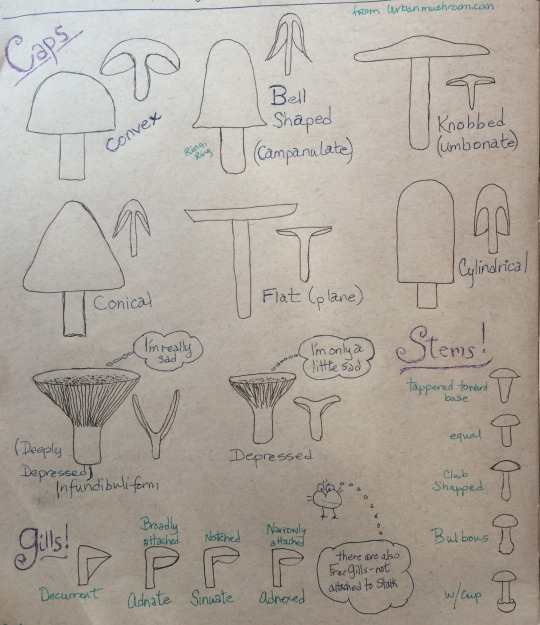
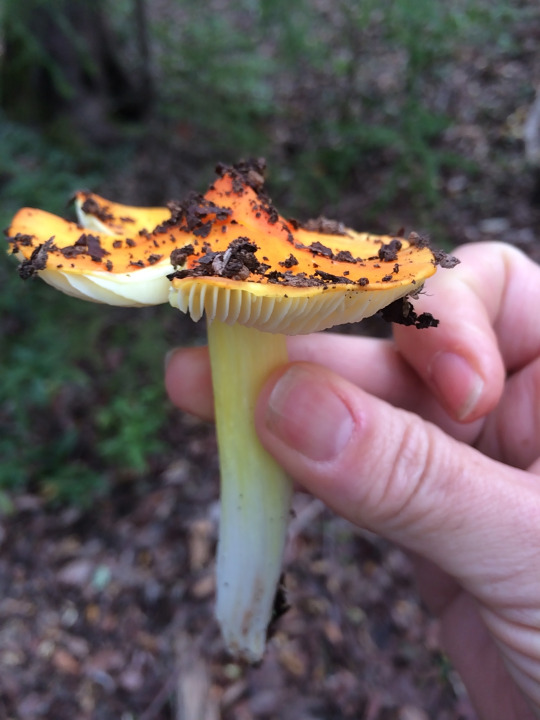

Fungus Discovery... Until next Autumn (Part II of III)
All specimens were found in Healdsburg, CA.
(top left) - Clavulina rugosa or Clavulina cristata (?) branched coral fungus. It's funny, I had never noticed coral fungus before and now I see them hiking about all the time. I wonder if its a good year for them or I'm not as observant as I thought... probably both. Discovered in February 2015.
(top right) - Pleurotus ostreatus (?) Oyster mushroom. It was growing in the cleavage of a dead oak tree. The smooth white caps were huge, ~1ft across, flat shelves. Just beautiful. Discovered in February 2015.
(middle photo) - my notebook sketches to help me identify what I've found. There are lots of other morphological structures to help ID fungus, but this got me started. I liked the "how to identify mushrooms" page from Urbanmushrooms.com
(bottom left) - looks like an Amanita caesarea, the coloring for the cap and stalk match well, as do the gill structures, but this one didn't have the remnants of the cup at the base of the stalk. It also didn't have the annulus ring... It's a conundrum (I love that word). Update- I'm thinking its a Hygrocybe acutoconica, a medium sized waxy cap. What do you think? =) Discovered in January 2015.
(bottom right) - I was thinking it was a trumpet fungus, but after a bit of reading maybe its a type of deeply depressed Chanterelle or Clitocybe? Unfortunately I didn't take a picture of the connection between the Cap and gills, so I may never know. ugh- another conundrum! =) I really like the photo though. Discovered in February 2015.
3 notes
·
View notes
Photo





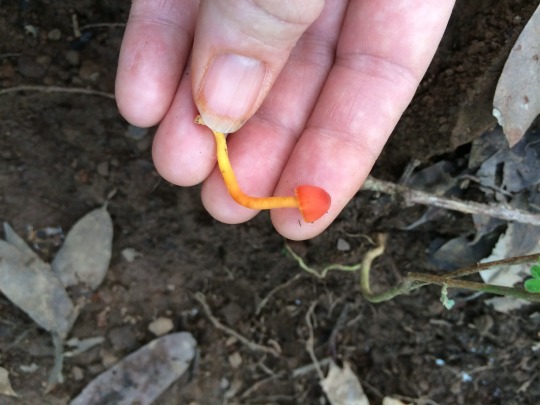
Fungus Discovery... until next Autumn (though I'm not sure when that will be)
Part I of III
The seasons have been a bit confused over the past months; Winter in November, Fall in December, Spring in January... but no matter what the calendar says, I suspect that our mushroom hunting will be coming to an end shortly. The weather is just too nice (Apologies to the rest of the country. If its any consolation, we'll be suffering something fierce this summer when we have no water).
This post (and the next 2) will be photos of the mushrooms I've found over the past months. Please don't hesitate to say if you can identify them. All specimens on this page were found on Fitch Mountain in Healdsburg, CA.
(Top two photos)- maybe a really wet Suillus sp? Discovered in December 2014.
(Middle two photos)- a type of bolete? It was pretty dried up, to the point of being hard to the touch, but it looked like something out of a fairy tale. Discovered in February 2015.
(Bottom two photos)- Mycena acicula, an Orange bonnet (?) Identified in February 2015.
0 notes
Photo




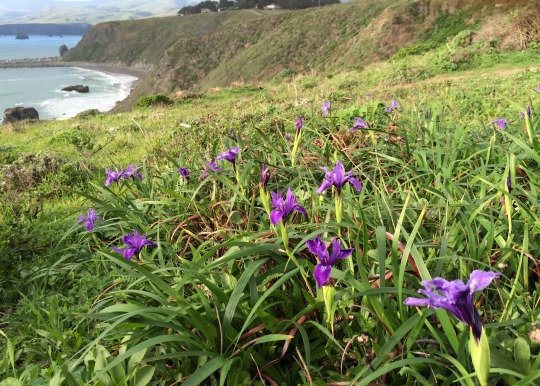
Last week I was in Minnesota. I really like Minnesota, super lovely people, beautiful lakes & forests, fireflies, cheese curds, it’s just a great place.
However…
Last week was cold. Serious cold. The kind that can kill you. My native Minnesotan friends called the weather ‘bitter’. It wasn’t bitter. It was… I can’t say without swearing.
top left photo- flying into the Twin Cities over the frozen lakes. I could see the truck headlights as they drove over the ice to their fishing huts…
top right photo- my car’s thermometer. Yes, that says -8F. No idea what the temp was with the wind chill. One day, the High was 0F… The HIGH!
Yesterday, we went to Blind Beach on the Sonoma Coast. It was a spectacular day. Roughly 70F, light breeze, got a slight sun burn. It was a perfect day, I loved every second of it.
Middle photo- Arch rock, south of Goat Rock (for the Goonies Fans out there, that’s the location where they filmed the very last scene)
Bottom left photo- on Blind Beach looking out West
Bottom right photo- looking northward up towards Goat Rock, with Douglas Iris’ (Iris douglasiana) in the foreground. To my knowledge, this native iris usually show up around late spring… it’s February. craziness.
Moral of the story;
Minnesotans are… what’s tougher than nails? Oh my god, seriously tough.
It’s probably a disservice to raise your children in Northern California. We just don’t understand what it’s like out there.
I am very, very happy to be home.
0 notes
Photo

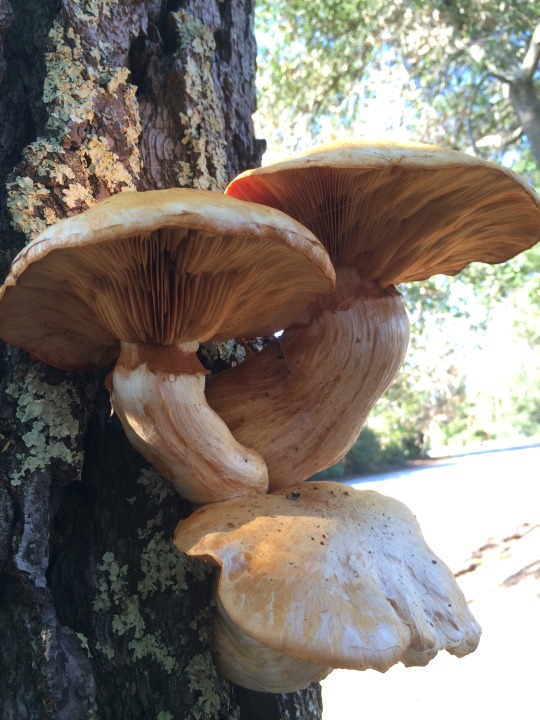
Not sure what type of mushroom, Update- Its a Gymnopilus junonius and it is still but it was Hugely Awesome! The Cowboy hat in the top photo belongs to 8-year-old Nephew (yes- that would be one of the famous Invertebrate Hunter Extraordinaires, who also dabble in Mycology). He is inspecting the mushrooms gills with a new angled mirror tool acquired at Christmas. His hat gives a good perspective of the size of the mushroom, the caps were about a foot in diameter. We found them on a dead Knob Cone Pine Tree (Pinus attenuata).
2 notes
·
View notes
Photo
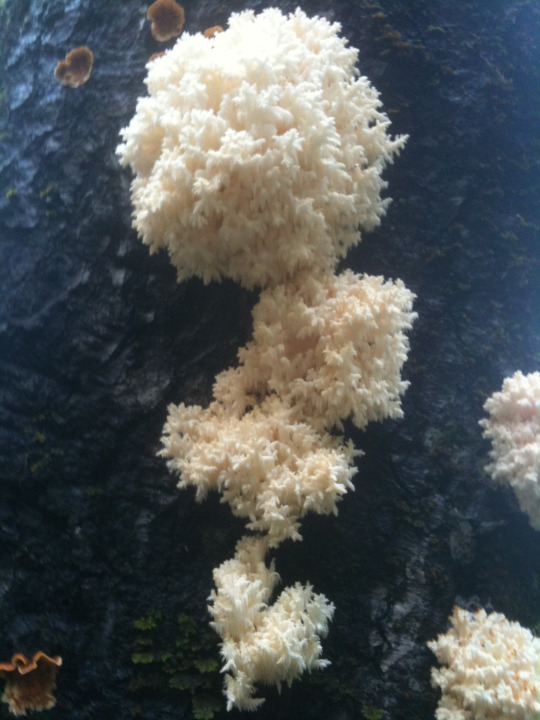
Not the best picture, but an awesome specimen of a Goat's Beard Mushroom (Hericium abietis - I think). I found it growing on a dead oak tree, in Healdsburg CA. Like the Lion's Mane, it is edible and evidently tasty. (I didn't try to eat this one, it was a bit out of reach)
0 notes
Photo
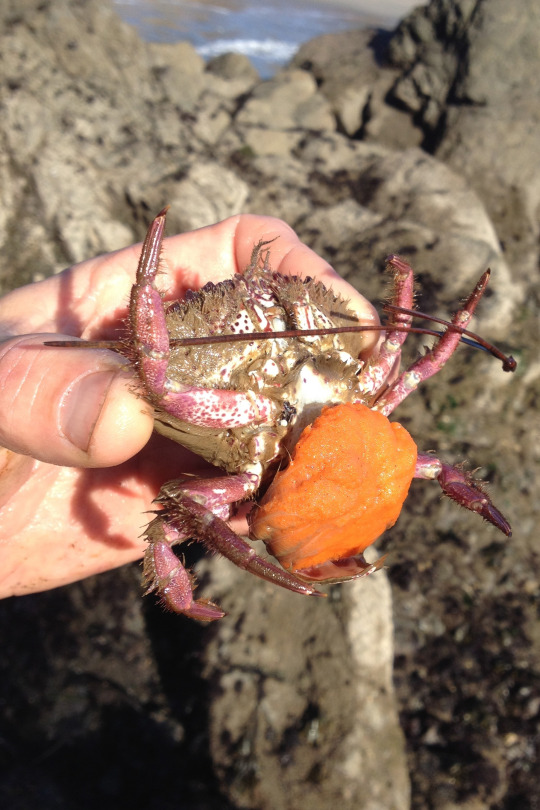
California Rock Crab - Romaleon antennarium (formerly Cancer antennarius)
8-year-old Nephew Invertebrate Hunter Extraordinaire found this female California rock crab (aka Pacific or Brown rock crab),along the intertidal zone of Van Damme State Park (Mendocino County, CA). It looks like this little lady has had a tough go of things. Not only is her tail flap extended out because she is so heavily laden with her egg mass, but she seems to be missing her front claws (chelipeds) and a leg or two. And I thought my week had been tough…
How to know who’s coming to lunch & what to severe; The easiest way to ID this rock crab is by the small red spots on it’s underside and hairy legs. It takes about two years to become full grown and they can get to be about 7” wide, across their top shell (carapace). They are found from British Columbia to Baja California and are evidently fond of eating black turban snails, bivalves (basket cockles, macomas), echinoderms (starfish, sea urchins) and the numerous hermit crabs that share the same environment.
Starting a family; Mating is in spring and fall and the berried (egg-carrying) females are most often seen November through January (makes sense, as this one was found Jan 19). The mating itself is pretty ingenious; The male will place a spermatophore (packet o’ sperm) within the female just after she has molted. This spermatophore then hardens within the female’s reproductive tract. This prevents other males from fertilizing her eggs and get this, the sperm within this packet can be utilized for multiple spawnings. Talk about efficiently removing the competition and getting multiple shots at having offspring (with only one go)! The female rock crab will extrude her eggs, while internally fertilized them eleven weeks after the mating. The orange-colored egg mass is held to the mom’s under belly and protected by her tail flap. After roughly 7-8 weeks, crab larvae hatch from the mass of eggs and then go through six stages of planktonic growth (i.e. growing up while drifting/swim in open water).
If you ever get a chance to go to a “night lighting” on coastal waters, do all you can not to miss it. It’s amazing to see what swims up to your light and you’ll probably meet a crab larvae or two.
(Update- a night lighting is when you stick a submersible light source over the edge of a pier or boat into the water (at night) and then wait for animals living in the water column to come check it out, i.e. Jellyfish, all kinds of zooplankton, squid, fish. Its stunningly cool and also where I met my first crab zoea =) Thanks for the question Merismo!
http://animaldiversity.org/accounts/Cancer_antennarius/
http://www.dfg.ca.gov/marine/dungeness_crab.asp#rock
http://www.wallawalla.edu/academics/departments/biology/rosario/inverts/Arthropoda/Crustacea/Malacostraca/Eumalacostraca/Eucarida/Decapoda/Brachyura/Family_Cancridae/Cancer_antennarius.html
2 notes
·
View notes